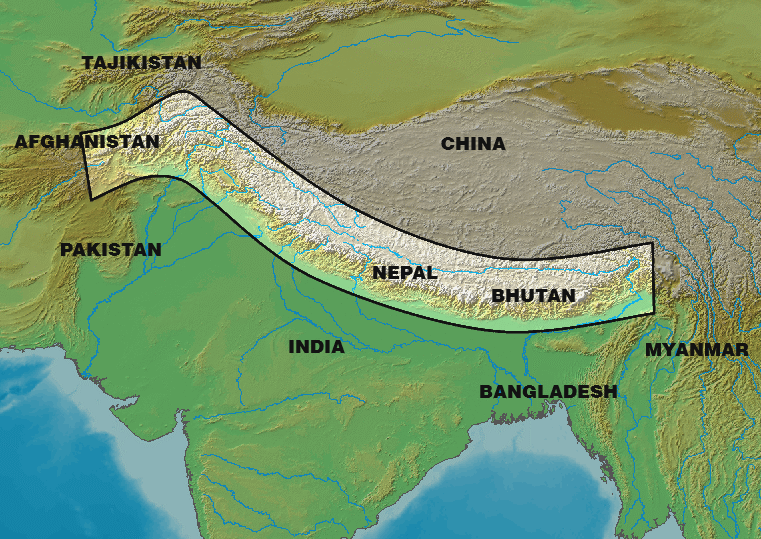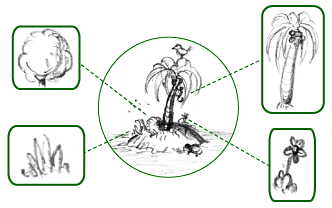|
Roylea
''Roylea'' is a genus of flowering plant in the family Lamiaceae, first described as a genus in 1830. It contains only one known species, ''Roylea cinerea'', native to the Western Himalayas of Nepal and northern India India, officially the Republic of India ( Hindi: ), is a country in South Asia. It is the seventh-largest country by area, the second-most populous country, and the most populous democracy in the world. Bounded by the Indian Ocean on the .... References Lamiaceae Flora of Nepal Flora of West Himalaya Monotypic Lamiaceae genera Taxa named by David Don Taxa named by Henri Ernest Baillon {{Lamiaceae-stub ... [...More Info...] [...Related Items...] OR: [Wikipedia] [Google] [Baidu] |
Lamiaceae
The Lamiaceae ( ) or Labiatae are a family of flowering plants commonly known as the mint, deadnettle or sage family. Many of the plants are aromatic in all parts and include widely used culinary herbs like basil, mint, rosemary, sage, savory, marjoram, oregano, hyssop, thyme, lavender, and perilla, as well as other medicinal herbs such as catnip, salvia, bee balm, wild dagga, and oriental motherwort. Some species are shrubs, trees (such as teak), or, rarely, vines. Many members of the family are widely cultivated, not only for their aromatic qualities, but also their ease of cultivation, since they are readily propagated by stem cuttings. Besides those grown for their edible leaves, some are grown for decorative foliage. Others are grown for seed, such as '' Salvia hispanica'' (chia), or for their edible tubers, such as '' Plectranthus edulis'', '' Plectranthus esculentus'', ''Plectranthus rotundifolius'', and ''Stachys affinis'' (Chinese artichoke). Many are al ... [...More Info...] [...Related Items...] OR: [Wikipedia] [Google] [Baidu] |
David Don
David Don (21 December 1799 – 15 December 1841) was a Scottish botanist. Biography David Don was born on 21 December 1799 at Doo Hillock, Forfar, Angus, Scotland to Caroline Clementina Stuart, and her husband George Don of Forfar. His older brother was George Don, also a botanist. His father was a curator at the Royal Botanic Garden, Leith Walk, Edinburgh. Don was Professor of Botany at King's College London from 1836 to 1841, and librarian at the Linnean Society of London from 1822 to 1841. He described several of the major conifers discovered in the period, including first descriptions of coast redwood (''Taxodium sempervirens'' D. Don; now ''Sequoia sempervirens'' (D. Don) Endl.), Bristlecone Fir (''Pinus bracteata'' D. Don, now ''Abies bracteata'' (D. Don) A. Poit.), Grand Fir (''Pinus grandis'' Douglas ex D. Don; now ''Abies grandis'' (Douglas ex D. Don) Lindl.) and Coulter Pine (''Pinus coulteri'' D. Don), and was the first to treat Sugi (''Cupressus japonica'' Thunb ... [...More Info...] [...Related Items...] OR: [Wikipedia] [Google] [Baidu] |
Henri Ernest Baillon
Henri Ernest Baillon was a French botanist and physician. He was born in Calais on 30 November 1827 and died in Paris on 19 July 1895. Baillon spent his professional life as a professor of natural history, and he published numerous works on botany. He was appointed to the Légion d'honneur in 1867 and joined the Royal Society The Royal Society, formally The Royal Society of London for Improving Natural Knowledge, is a learned society and the United Kingdom's national academy of sciences. The society fulfils a number of roles: promoting science and its benefits, r ... in 1894. Baillon put together the "Dictionnaire de botanique", for which Auguste Faguet produced the wood engravings. The plant genus '' Baillonia'' (family Verbenaceae) was named in his honor by Henri Théophile Bocquillon. [...More Info...] [...Related Items...] OR: [Wikipedia] [Google] [Baidu] |
Flowering Plant
Flowering plants are plants that bear flowers and fruits, and form the clade Angiospermae (), commonly called angiosperms. They include all forbs (flowering plants without a woody stem), grasses and grass-like plants, a vast majority of broad-leaved trees, shrubs and vines, and most aquatic plants. The term "angiosperm" is derived from the Greek words ἀγγεῖον / ('container, vessel') and σπέρμα / ('seed'), meaning that the seeds are enclosed within a fruit. They are by far the most diverse group of land plants with 64 orders, 416 families, approximately 13,000 known genera and 300,000 known species. Angiosperms were formerly called Magnoliophyta (). Angiosperms are distinguished from the other seed-producing plants, the gymnosperms, by having flowers, xylem consisting of vessel elements instead of tracheids, endosperm within their seeds, and fruits that completely envelop the seeds. The ancestors of flowering plants diverged from the common ance ... [...More Info...] [...Related Items...] OR: [Wikipedia] [Google] [Baidu] |
Himalayas
The Himalayas, or Himalaya (; ; ), is a mountain range in Asia, separating the plains of the Indian subcontinent from the Tibetan Plateau. The range has some of the planet's highest peaks, including the very highest, Mount Everest. Over 100 peaks exceeding in elevation lie in the Himalayas. By contrast, the highest peak outside Asia ( Aconcagua, in the Andes) is tall. The Himalayas abut or cross five countries: Bhutan, India, Nepal, China, and Pakistan. The sovereignty of the range in the Kashmir region is disputed among India, Pakistan, and China. The Himalayan range is bordered on the northwest by the Karakoram and Hindu Kush ranges, on the north by the Tibetan Plateau, and on the south by the Indo-Gangetic Plain. Some of the world's major rivers, the Indus, the Ganges, and the Tsangpo– Brahmaputra, rise in the vicinity of the Himalayas, and their combined drainage basin is home to some 600 million people; 53 million people live in the Himalayas. The Himalaya ... [...More Info...] [...Related Items...] OR: [Wikipedia] [Google] [Baidu] |
Nepal
Nepal (; ne, नेपाल ), formerly the Federal Democratic Republic of Nepal ( ne, सङ्घीय लोकतान्त्रिक गणतन्त्र नेपाल ), is a landlocked country in South Asia. It is mainly situated in the Himalayas, but also includes parts of the Indo-Gangetic Plain, bordering the Tibet Autonomous Region of China to the north, and India in the south, east, and west, while it is narrowly separated from Bangladesh by the Siliguri Corridor, and from Bhutan by the Indian state of Sikkim. Nepal has a diverse geography, including fertile plains, subalpine forested hills, and eight of the world's ten tallest mountains, including Mount Everest, the highest point on Earth. Nepal is a multi-ethnic, multi-lingual, multi-religious and multi-cultural state, with Nepali as the official language. Kathmandu is the nation's capital and the largest city. The name "Nepal" is first recorded in texts from the Vedic period of the ... [...More Info...] [...Related Items...] OR: [Wikipedia] [Google] [Baidu] |
India
India, officially the Republic of India ( Hindi: ), is a country in South Asia. It is the seventh-largest country by area, the second-most populous country, and the most populous democracy in the world. Bounded by the Indian Ocean on the south, the Arabian Sea on the southwest, and the Bay of Bengal on the southeast, it shares land borders with Pakistan to the west; China, Nepal, and Bhutan to the north; and Bangladesh and Myanmar to the east. In the Indian Ocean, India is in the vicinity of Sri Lanka and the Maldives; its Andaman and Nicobar Islands share a maritime border with Thailand, Myanmar, and Indonesia. Modern humans arrived on the Indian subcontinent from Africa no later than 55,000 years ago., "Y-Chromosome and Mt-DNA data support the colonization of South Asia by modern humans originating in Africa. ... Coalescence dates for most non-European populations average to between 73–55 ka.", "Modern human beings—''Homo sapiens''—originated in Africa. Th ... [...More Info...] [...Related Items...] OR: [Wikipedia] [Google] [Baidu] |
Flora Of Nepal
The Flora of Nepal is one of the richest in the world due to the diverse climate, topology and geography of the country. Research undertaken in the late 1970s and early 1980s documented 5067 species of which 5041 were angiosperms and the remaining 26 species were gymnosperms. The Terai area has hardwood, bamboo, palm, and sal trees. Notable plants include the garden angelica, '' Luculia gratissima'', '' Meconopsis villosa'', and '' Persicaria affinis''. However, according to ICOMOS checklist (as of 2006), in the protected sites, there are 2,532 species of vascular plants under 1,034 genera and 199 families. The variation in figures is attributed to inadequate floral coverage filed studies. There are 400 species of vascular plants which are endemic to Nepal. Of these, two in particular are orchids '' Pleione coronaria'' and '' Oreorchis porphyranthes.'' The most popular endemic plant of Nepal is rhododendron (arboreum) which in Nepali language is called ''lali guras''. See als ... [...More Info...] [...Related Items...] OR: [Wikipedia] [Google] [Baidu] |
Flora Of West Himalaya
Flora (: floras or florae) is all the plant life present in a particular region or time, generally the naturally occurring ( indigenous) native plants. The corresponding term for animals is ''fauna'', and for fungi, it is ''funga''. Sometimes bacteria and fungi are also referred to as flora as in the terms ''gut flora'' or ''skin flora''. Etymology The word "flora" comes from the Latin name of Flora, the goddess of plants, flowers, and fertility in Roman mythology. The technical term "flora" is then derived from a metonymy of this goddess at the end of the sixteenth century. It was first used in poetry to denote the natural vegetation of an area, but soon also assumed the meaning of a work cataloguing such vegetation. Moreover, "Flora" was used to refer to the flowers of an artificial garden in the seventeenth century. The distinction between vegetation (the general appearance of a community) and flora (the taxonomic composition of a community) was first made by Jules Thurman ... [...More Info...] [...Related Items...] OR: [Wikipedia] [Google] [Baidu] |
Monotypic Lamiaceae Genera
In biology, a monotypic taxon is a taxonomic group (taxon) that contains only one immediately subordinate taxon. A monotypic species is one that does not include subspecies or smaller, infraspecific taxa. In the case of genera, the term "unispecific" or "monospecific" is sometimes preferred. In botanical nomenclature, a monotypic genus is a genus in the special case where a genus and a single species are simultaneously described. In contrast, an oligotypic taxon contains more than one but only a very few subordinate taxa. Examples Just as the term ''monotypic'' is used to describe a taxon including only one subdivision, the contained taxon can also be referred to as monotypic within the higher-level taxon, e.g. a genus monotypic within a family. Some examples of monotypic groups are: Plants * In the order Amborellales, there is only one family, Amborellaceae and there is only one genus, ''Amborella'', and in this genus there is only one species, namely ''Amborella trichopoda.'' ... [...More Info...] [...Related Items...] OR: [Wikipedia] [Google] [Baidu] |
Taxa Named By David Don
In biology, a taxon (back-formation from ''taxonomy''; plural taxa) is a group of one or more populations of an organism or organisms seen by taxonomists to form a unit. Although neither is required, a taxon is usually known by a particular name and given a particular ranking, especially if and when it is accepted or becomes established. It is very common, however, for taxonomists to remain at odds over what belongs to a taxon and the criteria used for inclusion. If a taxon is given a formal scientific name, its use is then governed by one of the nomenclature codes specifying which scientific name is correct for a particular grouping. Initial attempts at classifying and ordering organisms (plants and animals) were set forth in Carl Linnaeus's system in ''Systema Naturae'', 10th edition (1758), as well as an unpublished work by Bernard and Antoine Laurent de Jussieu. The idea of a unit-based system of biological classification was first made widely available in 1805 in the int ... [...More Info...] [...Related Items...] OR: [Wikipedia] [Google] [Baidu] |




